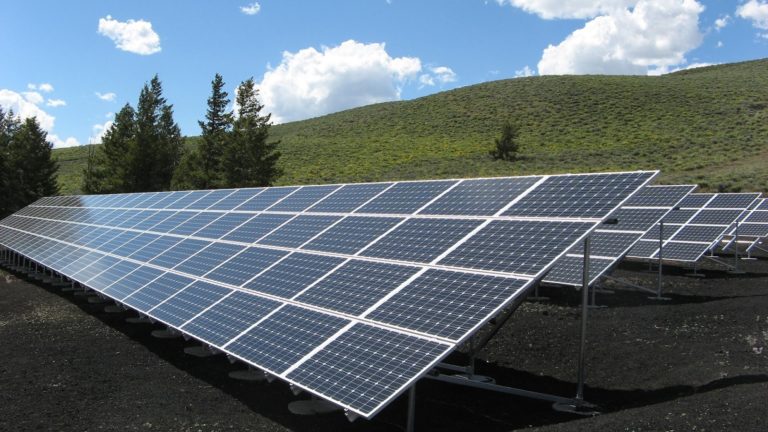What Does Eco-Friendly Mean?

When it comes to sustainability, eco-friendly is a buzzword that gets thrown around often. While at first glance, this term may seem generic and unimportant, there is a lot more behind it. Eco-friendly products are generally those that have been manufactured in a responsible way that leaves little to no negative impact on the environment.
The word “environmentally friendly” has been used for so many diverse things that its original meaning is in jeopardy of being lost. You can implement the behaviors that will lead to a healthier way of life for the world and all of its inhabitants, no matter how big or how tiny if you comprehend the true meaning of the term “environmentally friendly.”
There are also many ways that something can be eco-friendly. Often, manufacturers use different chemicals or processes when making new items to indicate their eco-friendliness. For example, items made from natural fibers like cotton or wool are more eco-friendly than those made from synthetic materials like polyester or nylon. Other examples include eco-friendly dyes, recycled materials, renewable energy sources for manufacturing processes, and so on.
What Constitutes an Eco-Friendly Product?
First and foremost, an eco-friendly product is one that is designed to have little to no impact on the environment. This means that it does not use harmful chemicals, produce excess waste, or use too much power — all of which can have a real and lasting negative effect on the planet.
That being said, there are no strict guidelines for what is and isn’t eco-friendly. This means that there is no one-size-fits-all term to describe an eco-friendly product. Instead, an eco-friendly product has been specifically designed to minimize its negative impact on the environment.
How to Begin Making Eco-Friendly Selections
Despite what you may believe, adopting eco-friendly decisions does not need a complete lifestyle overhaul. Often, the situation is considerably easier. Here are some examples of easy eco-friendly choices made by individuals:
- Utilize the three Rs: reduce, reuse, and recycle. Reduce your household’s overall waste output. Reuse materials rather than discard them. Choose to recycle your garbage regularly.
- Don’t use any plastic at all: Numerous common plastic products are now manufactured with eco-friendly substances.
- Composting: Composting is nature’s method of recycling, in which organic waste decomposes into the soil. A sustainable method for reducing food waste.
- Utilize eco-friendly items: Eco-friendly alternatives exist for practically every aspect of life, from child care to clothing brands.
- Eco-Friendly brands: Research eco-friendly brands, which should be ethical and encourage sustainability in their respective industries.
- Save Electricity: Reduce your electricity consumption and use energy-efficient goods to conserve energy.
- Go Local: Purchasing food at your neighborhood farmer’s market eliminates the need for packaging and transportation.
- Go Organic: Consume organic foods, as they are healthier and remove the need for hazardous pesticides.
- Materials: Choose products constructed from eco-friendly materials, such as bamboo, hemp, cork, and stainless steel.
- Carbon footprint: Reduce your daily carbon footprint by walking or cycling to work, taking public transportation, or carpooling.
- Choose cruelty-free products: avoid cosmetics and personal care items that undergo animal testing or contain animal-derived ingredients.
- Choose non-toxic products: from cleaning products to personal hygiene products, chemicals are ubiquitous. Consider organic and natural substitutes.
How is a Product Made Eco-Friendly?
There are many ways that a product can be made eco-friendly. First, the materials used to make the product should be renewable and/or recyclable. For example, cotton is a fabric that can be made completely from renewable resources.
In addition, the product should be manufactured in a way that minimizes the use of external resources. For example, the product should use renewable energy sources and/or be designed to have a long lifespan with minimal need for repair.
In many cases, these eco-friendly materials and manufacturing techniques will be reflected in the product’s price. However, keep in mind that the benefits of choosing an eco-friendly product more than outweigh the cost. Not only will an eco-friendly product have less of a negative impact on the environment, but it may also last longer and operate more efficiently.
Green Manufacturing Processes
If a product’s materials are eco-friendly, that is one thing. But an eco-friendly product goes a step further by being manufactured in an eco-friendly way. For example, many items are dyed with harmful chemicals that emit harmful fumes. Alternatively, eco-friendly dyes use less harmful substances and emit significantly fewer fumes.
All manufacturing processes produce waste — and green manufacturers are conscious of this. For example, eco-friendly rubber tires are made from recycled rubber and other materials. Another example is eco-friendly paper production.
While the paper itself is a renewable resource, many paper plants use a lot of water and electricity to operate. Eco-friendly paper production uses less water and energy to produce the same amount of paper.
Using Eco-Friendly Materials
Many materials are eco-friendly. Natural fibers like cotton, wool, and linen are completely renewable and can be made into textiles, clothing, and more. In addition, they are often more durable than synthetic materials and require less water and energy to produce.
Other eco-friendly materials include sustainable wood, such as bamboo or maple; organic fabrics, like hemp or jute; raw minerals, like quartz; and recycled or reclaimed materials.
Renewable Energy Practices
One of the most important ways that a product can be made eco-friendly is by using renewable energy sources. This can include things like solar panels and wind turbines. These sources of energy are naturally replenished by the environment, meaning that they are completely sustainable and will not run out.
Caring for the environment goes beyond what products you buy. It is also important to think about how you use these products and the energy they consume. For example, if you buy an eco-friendly washing machine, you need to make sure to turn it off when it is not in use. If you buy solar panels for your house, you need to make sure to only use the amount of energy you need.
Green Dyes and Coating
Another way to make products more eco-friendly is to use eco-friendly dyes and coatings. These dyes coat the materials that a product is made from and often make the item look different. For example, color pigments are often used to dye fabrics and make them look vibrant.
These pigments can contain harmful chemicals and emit harmful chemicals, too. Alternatively, eco-friendly dyes use less harmful substances and emit significantly fewer fumes. Another example is car paint. Car paint is often colored with pigments that contain toxic chemicals. Alternatively, eco-friendly car paint uses less toxic materials and looks different because it does not contain any pigments.
Responsible Eco-Friendly Manufacturing
When a product is designed with eco-friendliness in mind, likely, the manufacturer will also have an eco-friendly approach. However, that is not always the case. If a product is made from natural materials, is manufactured with minimal energy and water use, and is crafted without toxic chemicals, but is then packed in a plastic bag and shipped around the world in a long-distance container ship, then it is not truly eco-friendly.
Be Careful of Greenwashing
Some brands offer eco-friendly information and approval stamps from recognized organizations. Other brands package and label their products with green colors or a symbol like a globe or a tree to appear eco-friendly. They won’t have proof their products are eco-friendly. Beware “greenwashing” marketing.
Large brands “greenwash” to promote ecologically beneficial products. It’s in most supermarket aisles. Single-use plastic bottles with a “5% less plastic” label and leaf emblem. Green-labeled, plastic-wrapped paper towels. Be cautious with these brands.
Research brands and products to decide which has the least environmental impact. Look for official seals from organizations such as “USDA Certified Organic” for organic food or “FSC” for paper and wood products.
You can also avoid certain ingredients. If you’re looking for an eco-friendly soap, knowing about possibly dangerous soap and washroom product ingredients will help. Most eco-friendly manufacturers are transparent about their efforts. They’ll list ingredients, where they acquire them sustainably, and what they’re doing to help the environment. More transparent brands are more eco-friendly.
Conclusion
If a product is truly eco-friendly, it must be designed and manufactured with minimal impact on the environment. This means that it will use renewable resources and minimal energy, as well as contain eco-friendly dyes and coatings. By looking at the materials used, the manufacturing process, and the product’s packaging, you can determine whether or not a product is truly eco-friendly. If you want to truly care for the environment, it is important to buy eco-friendly products.






